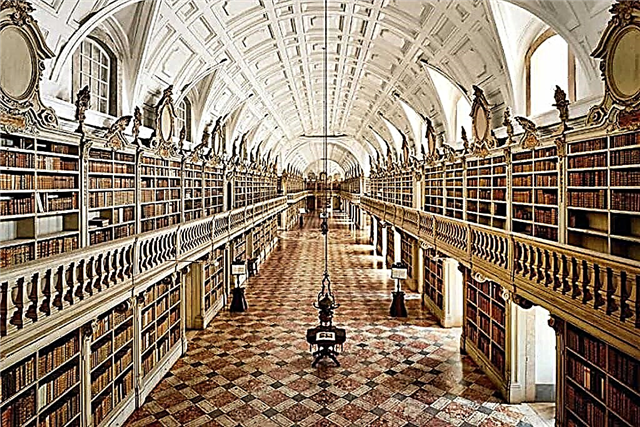Madrid is famous for many attractions, among which the Prado Museum occupies an honorable place. Thanks to the rich collection of the best works of Western European art, this place occupies a worthy place along with the Louvre and the Hermitage. The Prado Museum not only introduces visitors to the art collection owned by the Spanish monarchs, but also demonstrates the Spanish art school as a separate art movement.
History

The history of the famous Madrid Museum to some extent reflects the history of the formation of the Spanish state. Despite the fact that the official opening of the Prado falls on 1819, the history of the formation of its collection began during the liberation struggle of Spain against the Arab conquerors. The result of a long centuries-old struggle was the appearance on the territory of modern Spain of several separate kingdoms, which later united and became at the origins of the formation of the state of Spain.

In such difficult conditions, not every nobleman managed to be interested in art. Over the centuries, only monarchs and the Catholic Church have had the opportunity to collect art. It is not surprising that religious themes were clearly traced in the collections of art from this period. In addition, the change of the monarch on the Spanish throne was traditionally accompanied by the sale of art canvases collected during the reign. Therefore, the collection of Prado paintings does not include the works of art that made up the collections of the Castilian kings.
Interesting articles:
- Gardaland park in Italy
- Shopping in Italy
- Lucca city, Italy
- Madrid museums
- What to see in Madrid
- How to get to Italy

After liberation from Arab rule, the Spanish monarchy began to expand its spheres of influence, not only subjugating new territories. New opportunities have opened up for the development of science, culture and art. The Spanish king Carlos I for the first time refused traditional sales, and his collection of paintings went to the heir to Philip II. Like Carlos I, Philip II proved to be a worthy successor and subtle connoisseur of painting.
During the years of his reign, he significantly enriched the art collections of his predecessor not only with paintings on religious themes, but also with genre paintings and portraits. During the time of Philip II, the collection of paintings collected by the Spanish monarchs was exhibited to the court public in the royal palace of El Prado.

Many centuries later, the name of this country residence of the king migrated to the name of the present Madrid Museum. However, in the palace of Philip II Escorial, the common public was content with viewing paintings of exclusively religious themes.

Unlike his predecessor Philip II, Philip III was far from art. The years of his reign had a detrimental effect on the state of the royal collection, which not only was not replenished, but part of it was simply donated. However, thanks to Philip IV, a true connoisseur of art, it was possible to increase the collection with the best works of many famous European artists, and during the Bourbons' stay on the Spanish throne, the collection of Spanish monarchs was replenished with works of French artists.
[tp_search_shortcodes id = 4 origin = ”MOW” destination = ”MAD”]
Prado Museum Collection
Positioning the Spanish art school as a separate direction, the Prado Museum gives its visitors an opportunity to get acquainted in more detail with Spanish painting, represented by the unique canvases of famous Spanish artists. In particular, it is difficult to confuse the unique original manner of El Greco's performance with the paintings of other painters, which is distinguished by the use of rich colors, peculiar color and extraordinary temperament. Therefore, many visitors to the museum stay for a long time at his "Trinity" and "Crucifixion with the Mother of God, John and Mary Magdalene."

The portraits by Diego Velazquez are distinguished by their realism and unique play of color. The famous Spanish portrait painter skillfully conveyed with the help of paints not just the image of a person, but also his inner qualities. In "Portrait of Philip IV in Hunting Clothes" Velazquez portrayed the grandeur and arrogance inherent in royalty, and in "The Triumph of Bacchus or the Drunkard" the artist denounces human vices.

The works of Francisco Jose de Goya reflect the changes that took place in the artist's work under the influence of the events associated with the French Revolution. Visitors are delighted with the contrasts inherent in the artist's work: on the one hand, the pacifying painting "The Families of Charles IV", and on the other - the sharp strokes that emphasize the tragedy of the "Uprising of May 2, 1808 in Madrid".

In addition to works of fine art belonging to the brush of Spanish artists, the museum displays the best works of other European painters.

The current collection of Prado numbers about 7,600 paintings by famous European artists, among which Renaissance masters play a significant role. The collection of the museum is also decorated with unique jewelry made by ancient masters and more than 1000 masterfully made sculptural statues.
How to get to the Prado Museum
The museum is located at: Metro Banco de España, Atocha, Paseo del Prado s / n. 28014

You can visit any day, it works seven days a week. Its doors are open from 10 am to 8 pm. Working hours on weekends: 10.00-19.00.
The entrance ticket for an adult is 8 euros. But if you arrive 2 hours before closing, then you do not need to pay anything. Also, admission is free for all citizens on national holidays:
- May 2 and 18
- 12 october
- November 19
- December 6
Free for visitors under the age of 18.











